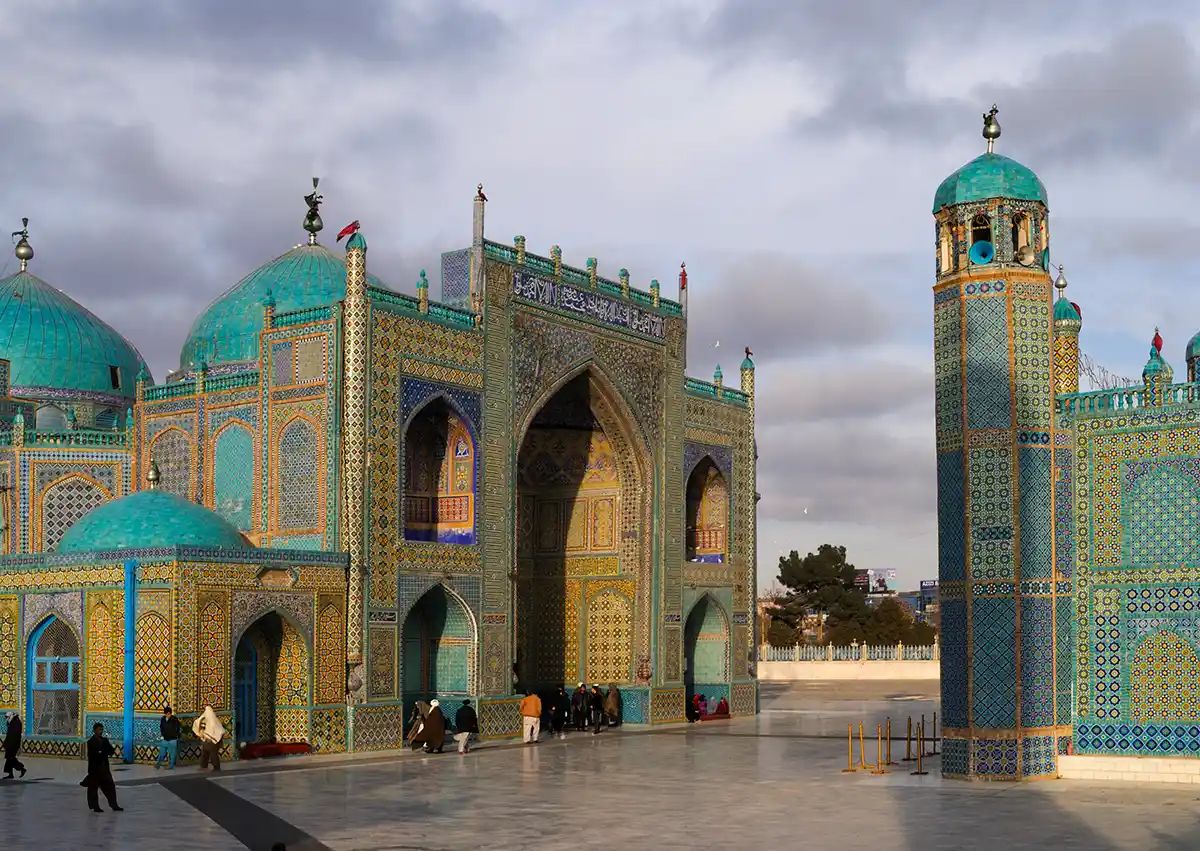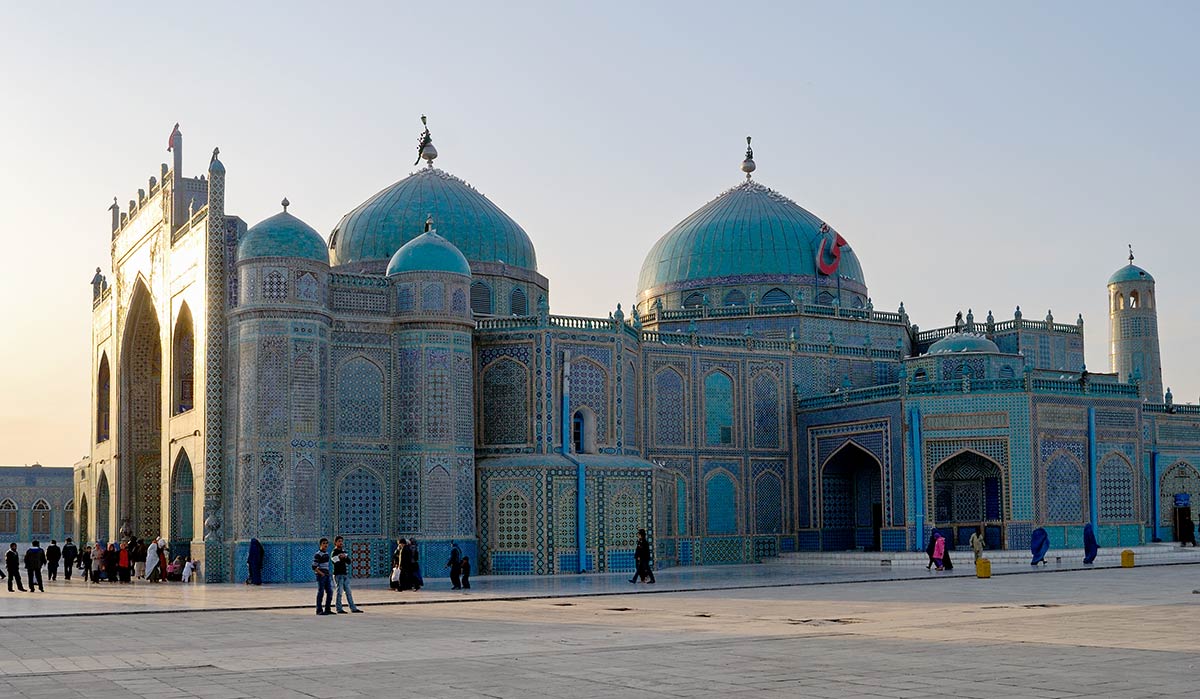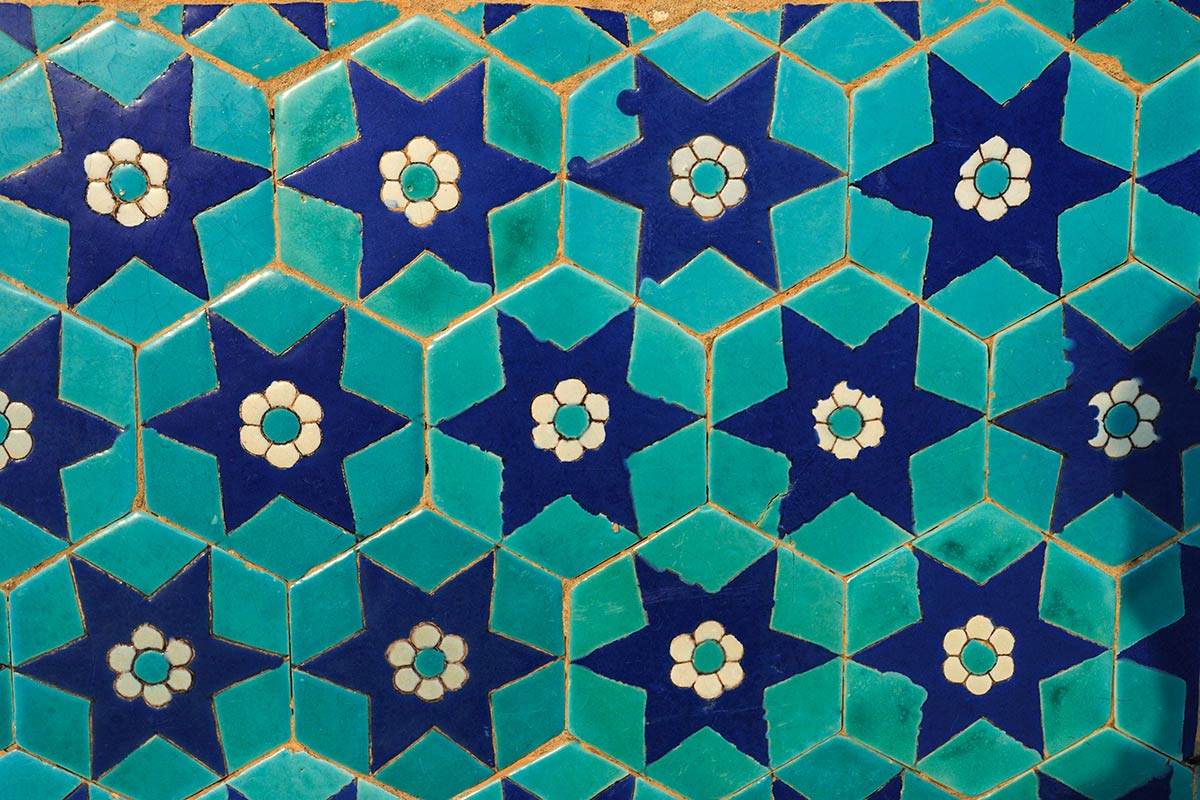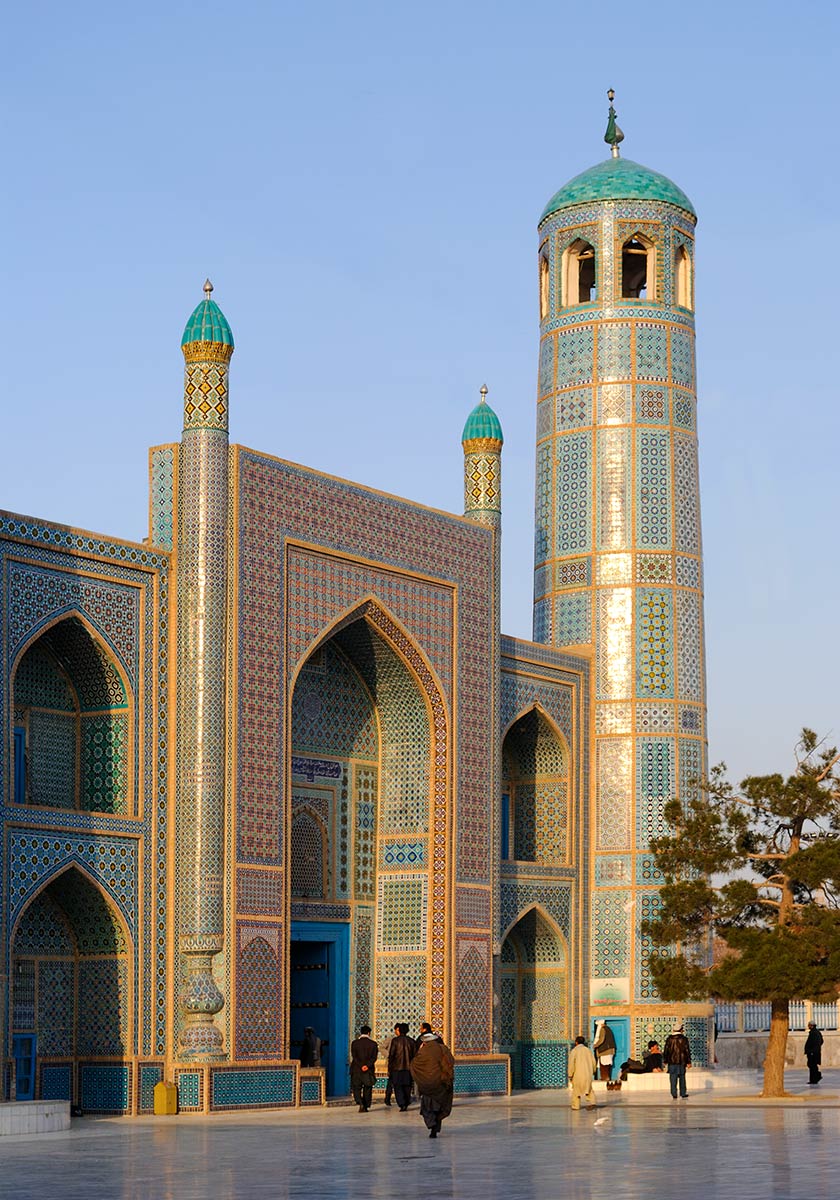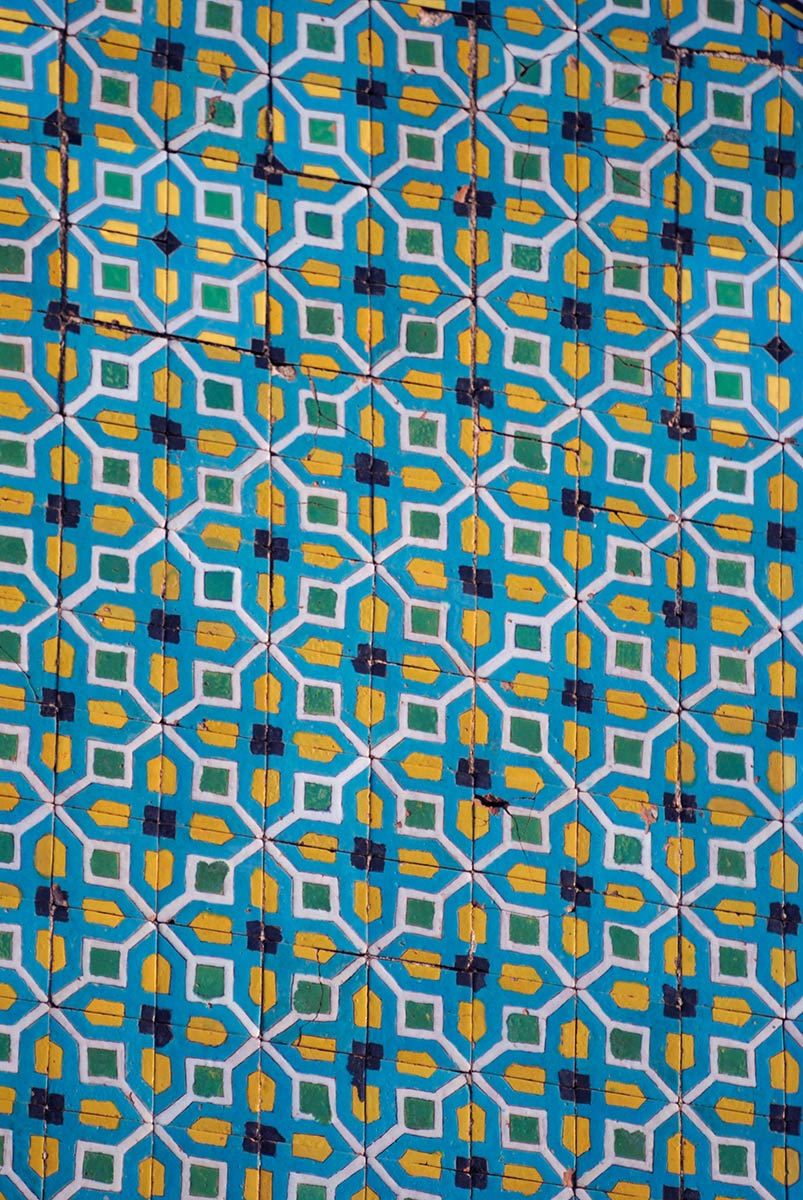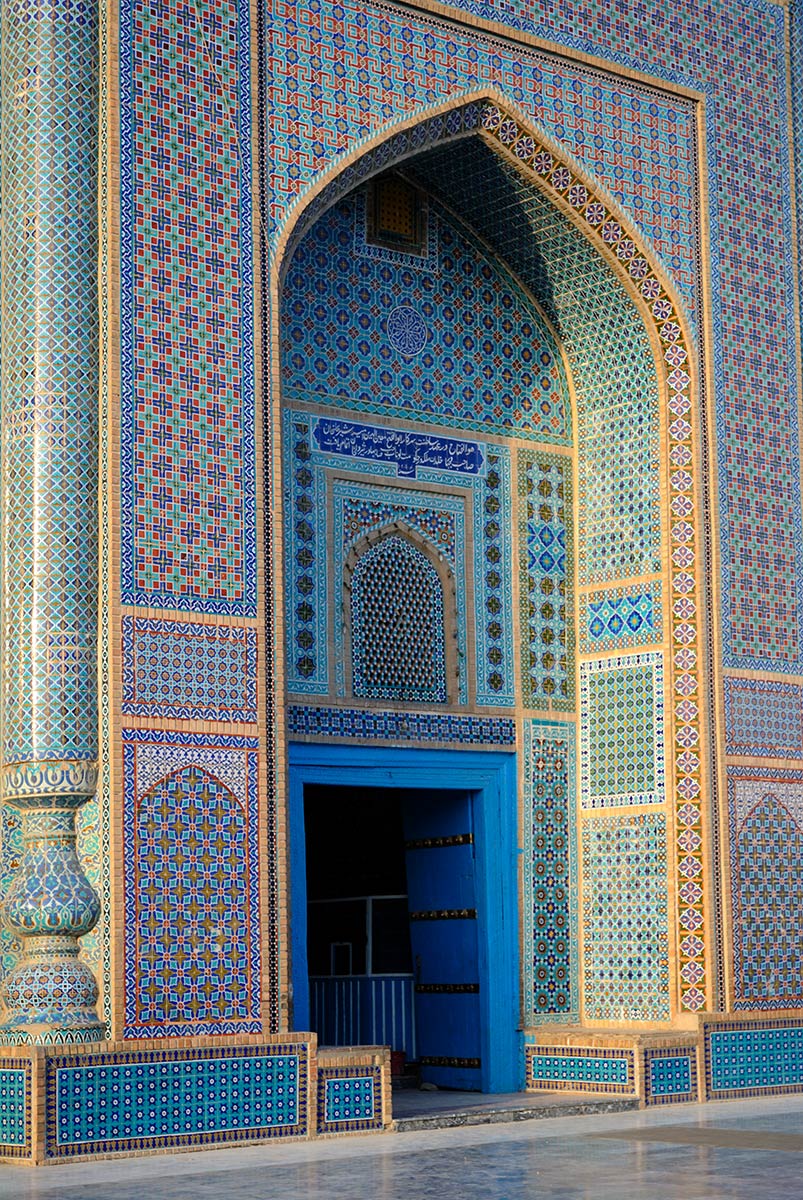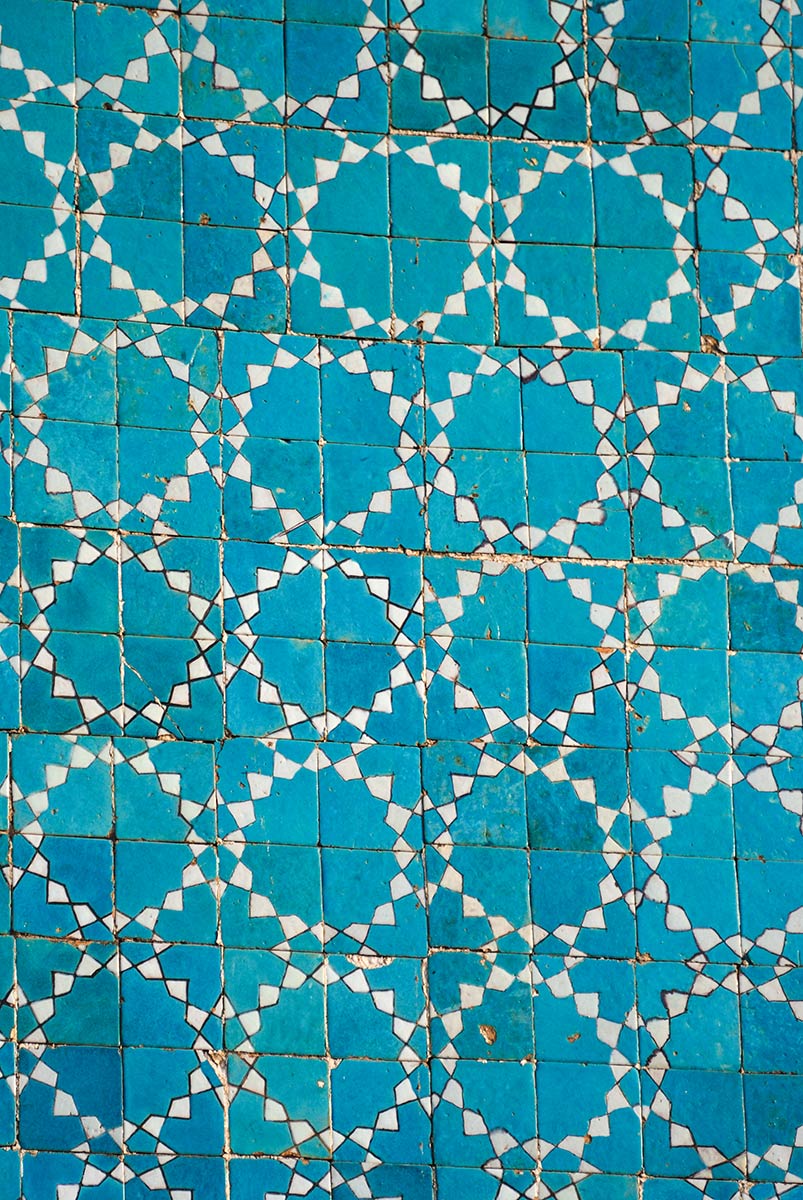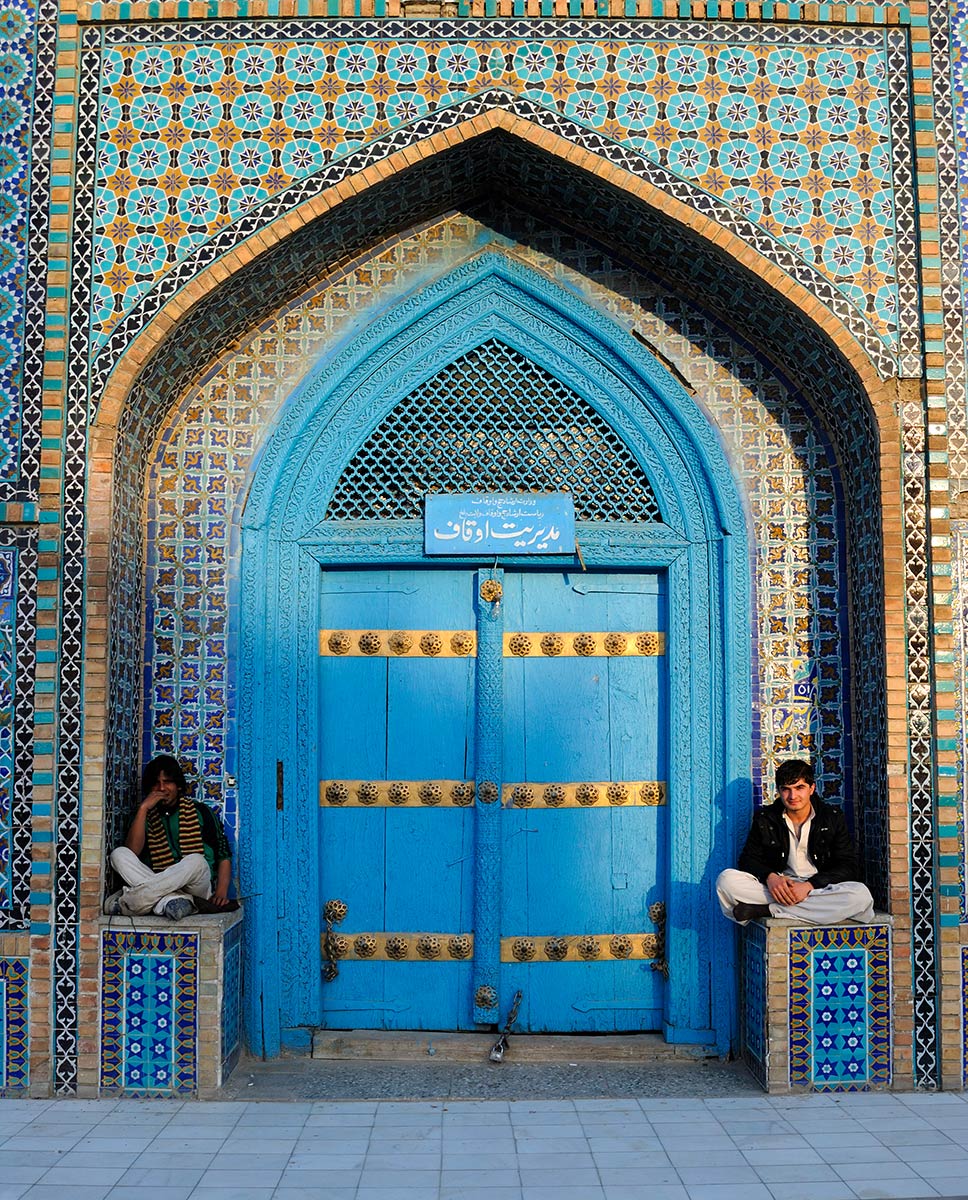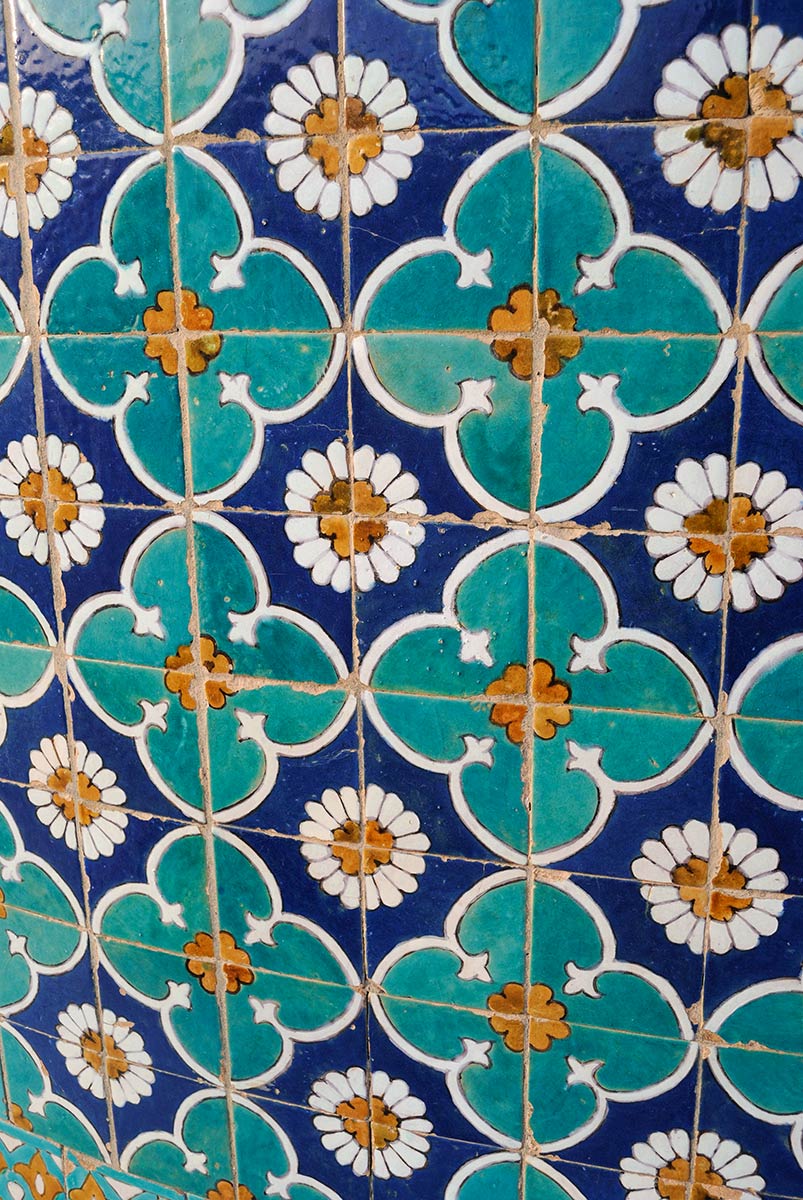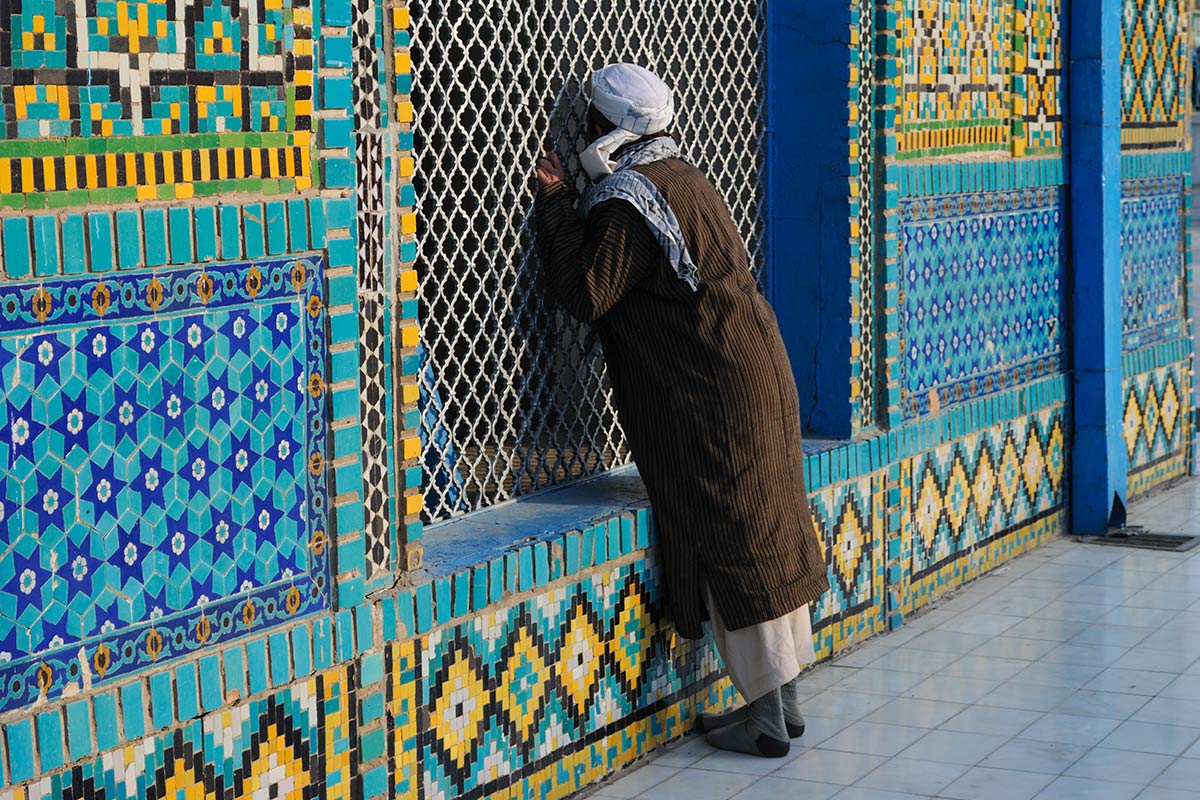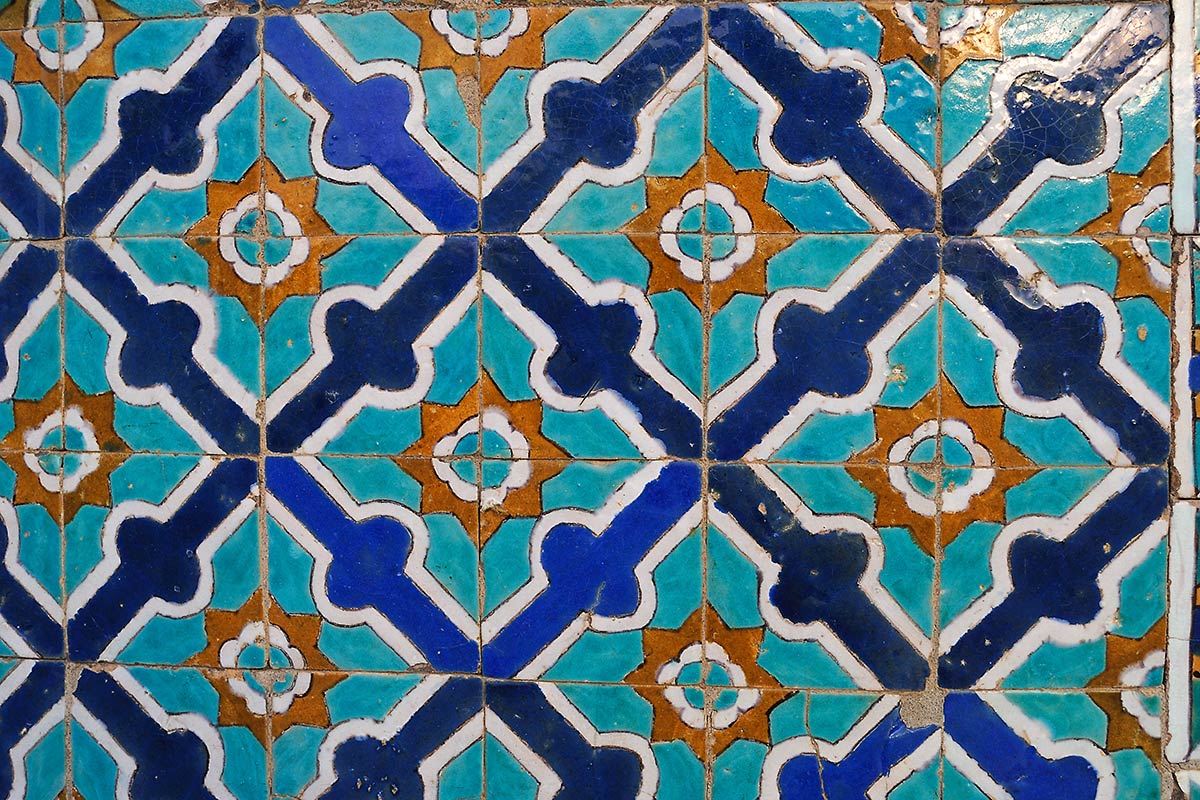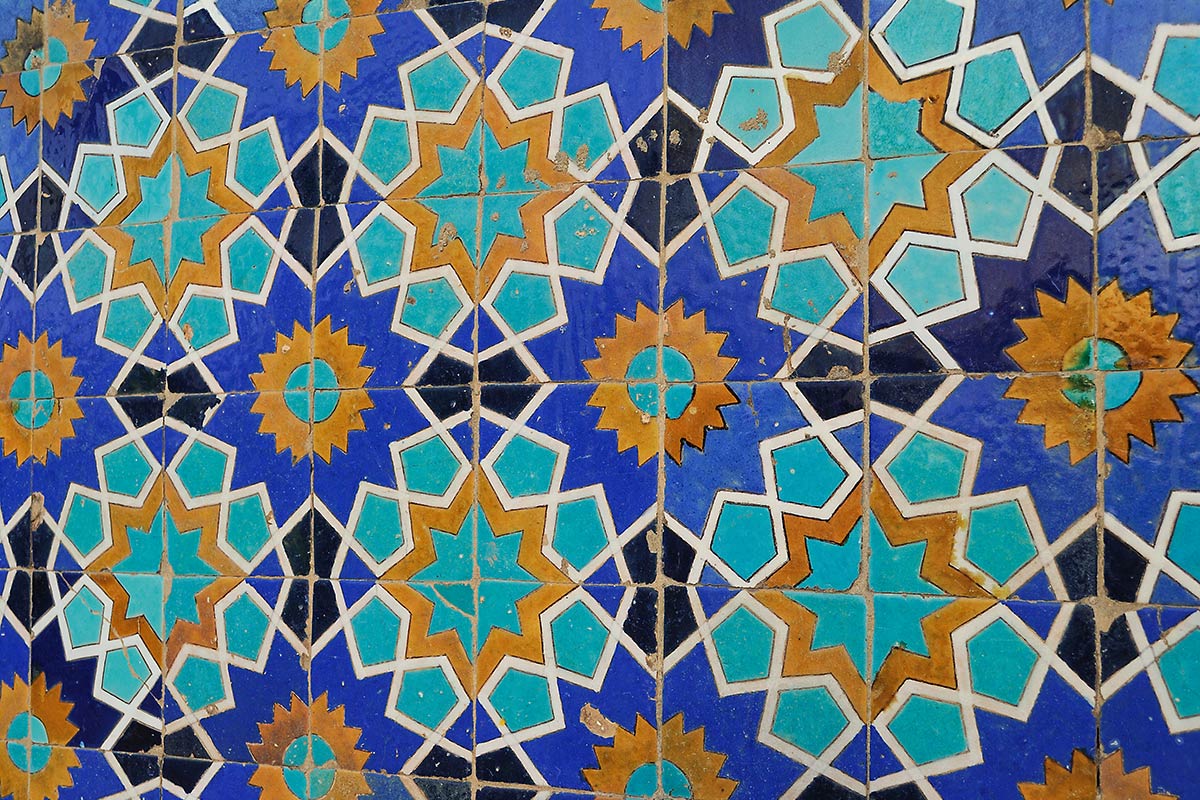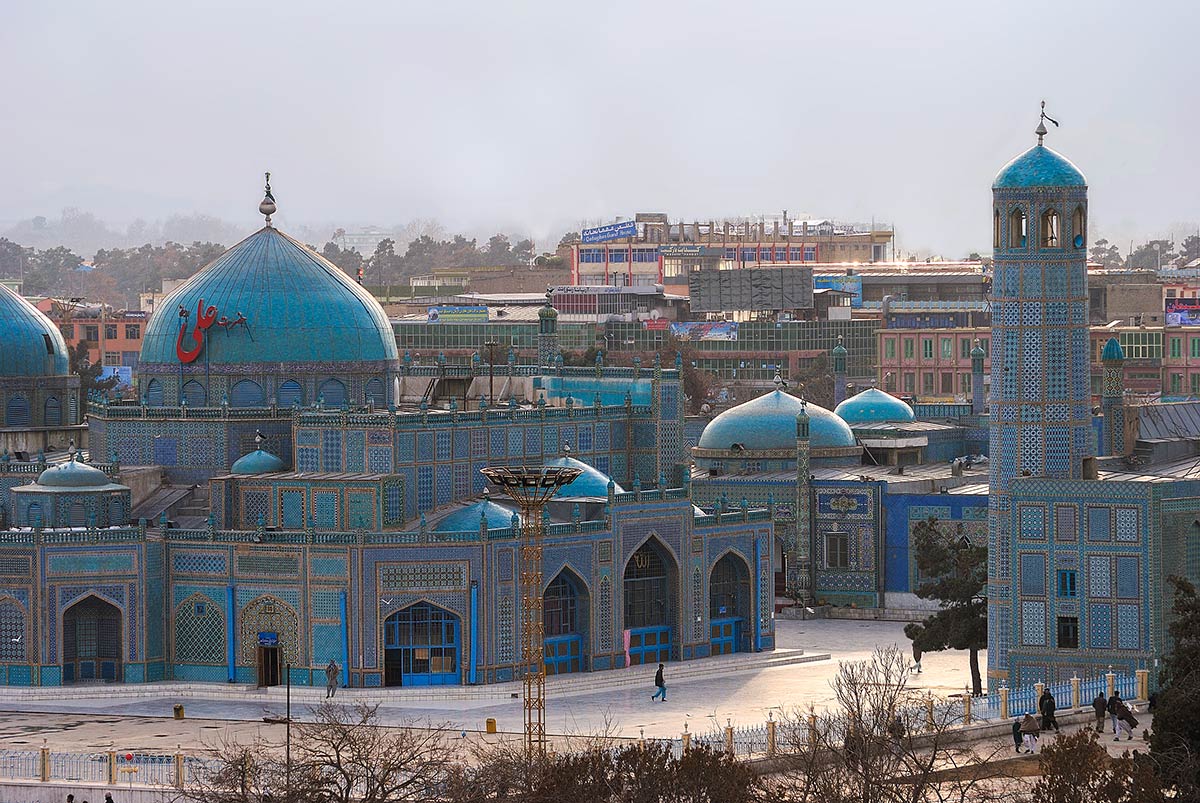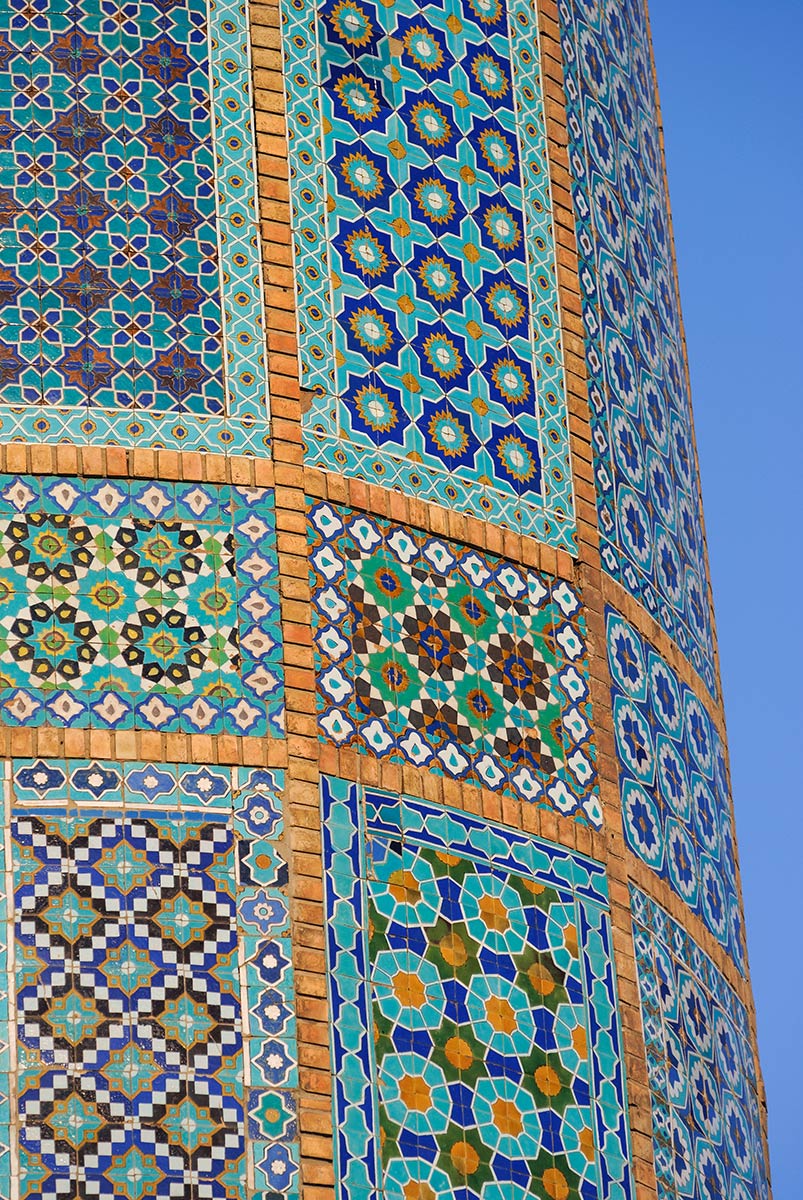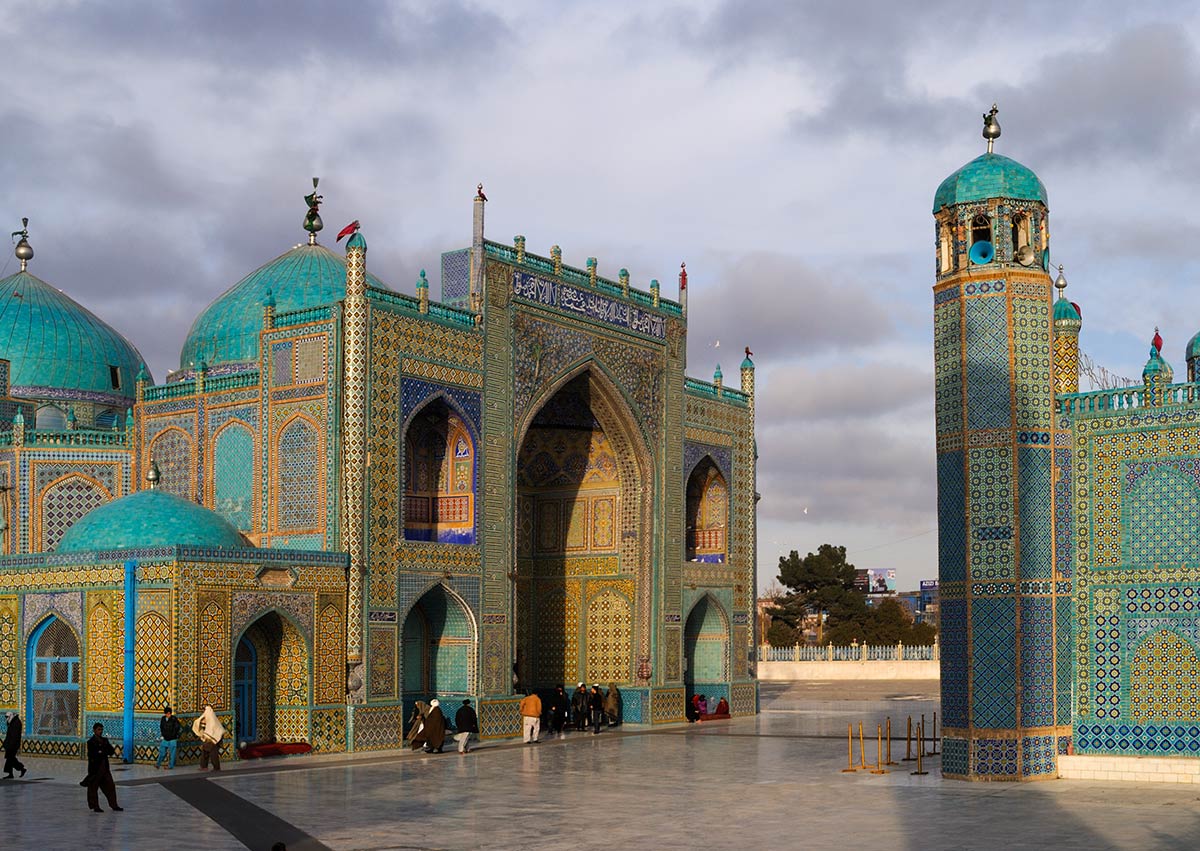Mazari Sharif
Mazari Sharīf (Mazar-e Sharīf, Mazar-i-Sharif) is the fourth largest city in Afghanistan, with a population of 300,000. It is the capital of the Balkh province and is home to multi-ethnic groups such as Uzbeks, Turkmen, Tajiks, and Hazaras. It is linked by roads to Kabul in the southeast, Herat to the west, and Uzbekistan to the north.
Mazari Sharif means "Noble Shrine" or "Tomb of the Exalted," a reference to the large, blue-tiled sanctuary and mosque in the city's center known as the Shrine of Hazrat Ali or the Blue Mosque.
It is believed by some Muslims (the Sunni) that the site of the tomb of Ali ibn Abi Talib - the cousin and son-in-law of Prophet Muhammad - is in Mazari Sharif. However, other Muslims (the Shi'a) believe that the real grave of Ali is found within the Imam Ali Mosque in Najaf, Iraq, as was disclosed by the Sixth Shi'a Imam, Ja'far as-Sadiq.
(An Imam is an Islamic leadership position, often the leader of a mosque and the community. Similar to spiritual leaders, the Imam leads the prayer during Islamic gatherings.)
According to Shi'a Muslim belief, Ali was originally buried by his two sons, Hasan and Husain, in an undisclosed location, which was later made known by Ja'far as-Sadiq (the Sixth Shi'a Imam and great, grandson of Husain) as the grave that is found within the Imam Ali Mosque in Najaf, Iraq.
According to tradition, in 661, shortly after the murder of Ali and the burial of his body at Najaf, near Baghdad (in present-day Iraq), some of Ali's followers worried that his enemies would defile his body. Therefore, they decided to remove his body and hide it in a secret location. Ali's remains were placed on a white female camel, which wandered eastward for several weeks until it ultimately fell to the ground exhausted. The body was then reburied where the camel fell, and its location was forgotten.
The founding of the actual shrine of Mazari Sharif owes its existence to a dream. At the beginning of the 1100s, a local mullah in the village of Khwaja Khayran had a dream in which Ali bin Abi Talib, Muhammad's cousin, son-in-law, and one of the four Rightly Guided Caliphs, appeared to reveal that he had been secretly buried near the city of Balkh (near present-day Marzari Sharif). In 1136, after locating the site, the Seljuk sultan Ahmed Sanjar ordered a city and shrine to be built on the spot, where it stood until its destruction by the Mongol warlord Genghis Khan around 1220. Two centuries later, in 1480, the Timurid sultan Husain Baiqara rebuilt the shrine, furthering the town's development into a large urban center.
The Timurid core of the shrine contains the tomb chamber of Ali, whose blue-tiled domes rise above the shrine's roofline. Tombs of various shapes and sizes belonging to different Afghan rulers and religious leaders were added to the Timurid shrine through the centuries, creating its current irregular profile. The shrine is roughly rectangular and measures about fifty-three meters by thirty-eight meters at the largest. It is aligned northwest-southeast and is enclosed within a fenced precinct built in the mid-twentieth century. The shrine's exterior is covered entirely with polychrome mosaic and painted tile panels dominated by shades of blue. Many of these tiles were renewed or replaced during twentieth-century renovations. One of the few remaining artifacts from the earlier shrine is a marble slab inscribed with the words, "Ali, Lion of God." The holy tomb of Ali draws Shi'a pilgrims throughout the year, especially during the celebration of New Year (Neuroz).
Click any image to enlarge.
Additional information on sacred sites in Afghanistan
Dupree, Louis; Saint Cults in Afghanistan; American Universities Field Staff Reports, South Asia Series (Afghanistan) 20:1, Hanover, New Hampshire; 1976
Safa, A. Ghafoor; The Tomb of Hazrat-e Ali, Historical Background and Recent Events; Society for the Preservation of Afghanistan’s Cultural Heritage; Peshawar; 1999

Martin Gray is a cultural anthropologist, writer and photographer specializing in the study of pilgrimage traditions and sacred sites around the world. During a 40 year period he has visited more than 2000 pilgrimage places in 160 countries. The World Pilgrimage Guide at sacredsites.com is the most comprehensive source of information on this subject.
